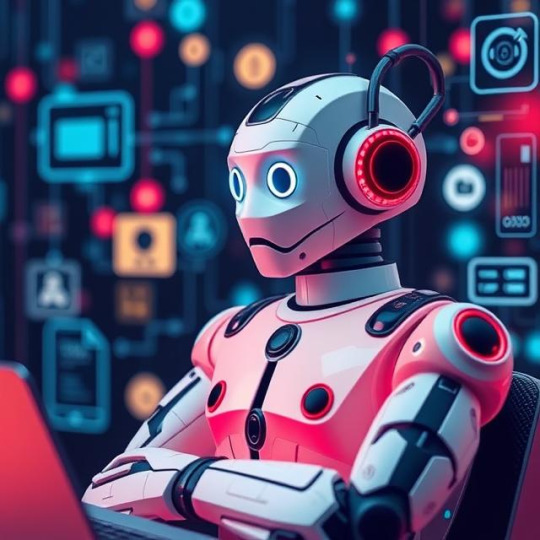Don't wanna be here? Send us removal request.
Text
How to Build a Car Rental App Like Udrive Full Breakdown for Startups
Thinking about launching a self-drive car rental app like Udrive?
The mobility tech space is exploding, and keyless car-sharing apps are at the center of it. But building one takes more than just an idea — you need a full blueprint.
This guide covers everything you need to get started:
✔️ Must-have features (for users, partners, and admins) ✔️ Smart tech stack recommendations ✔️ UI/UX flows that drive real bookings ✔️ Revenue models that go beyond “just renting” ✔️ Realistic cost breakdown (MVP to scale) ✔️ Growth tips and launch strategy
Read the full post here: 👉 How to Clone a Car Rental App Like Udrive – Full Guide
Whether you're building a startup or just curious about the tech behind these platforms, this is a solid starting point.
#startupguide#mobileapps#appdevelopment#udrive#carrentalapp#mobilitystartup#productdesign#founderlife#techstrategy#appcloning
1 note
·
View note
Text
Industrial IoT: When Machines Start Talking
We’re entering an era where machines don’t just work—they communicate. This is the Industrial Internet of Things (IIoT)—a game-changer for manufacturing, logistics, energy, and beyond.
Instead of waiting for breakdowns, industries now use smart sensors, real-time data, and automated insights to stay ahead of the curve.
The result? Fewer delays. Lower costs. Smarter operations.
💡 In this blog, you’ll learn:
What IIoT is (in simple terms)
How it's powering smart factories and predictive maintenance
The real-world impact across industries
The challenges companies face and how they overcome them
📖 Dive into the future of industrial tech: 👉 What is Industrial IoT?

0 notes
Text
Businesses Must Invest in Cloud Computing
Cloud computing is a game-changer, with the global market expected to hit $1.24 trillion by 2027 (Gartner). Over 94% of enterprises use cloud services, proving its necessity. Here’s why your business should invest in cloud solutions.
1. Cost Savings
Cloud adoption cuts IT costs by 30–50% (Forbes), eliminating expensive hardware and maintenance.
Key Stats:
80% of companies report lower costs (Flexera).
Cloud storage reduces IT maintenance costs by 35% (Gartner).
2. Scalability
Easily scale operations without infrastructure limits.
Key Stats:
70% of businesses improve efficiency with cloud scalability (IDG).
85% use multi-cloud strategies (Flexera).
3. Security
Cloud providers offer AI-driven security and automatic backups, reducing breach risks.
Key Stats:
95% of cloud breaches stem from human error (Gartner).
Providers invest $1B+ annually in cybersecurity (Microsoft).
4. Collaboration
With remote work on the rise, cloud tools enable seamless teamwork.
Key Stats:
79% say cloud boosts productivity (IDC).
Remote teams report 30% higher efficiency (McKinsey).
5. Business Continuity
Minimize downtime and recover data quickly.
Key Stats:
93% recover from cyberattacks faster with cloud backups (IBM).
50% fewer outages post-cloud migration (Cisco).
Conclusion
Cloud computing isn’t a trend—it’s a necessity. Stay competitive by embracing the cloud today.
0 notes
Text
AI-Powered UI/UX - The Future of Design
In the fast-evolving world of digital design, AI-powered UI/UX is emerging as a game-changing innovation, revolutionizing how designers create, test, and enhance user experiences. By leveraging artificial intelligence, businesses can now deliver intuitive interfaces, personalized user journeys, and seamless interactions like never before. The fusion of AI with UI/UX is no longer a futuristic concept—it’s rapidly becoming the industry standard.

The Role of AI in Modern UI/UX Design
AI enhances UI/UX design by automating repetitive tasks, predicting user behavior, and optimizing design decisions. From chatbots improving customer interactions to predictive analytics guiding designers, AI empowers teams to build smarter and more engaging experiences.
Key Benefits of AI-Powered UI/UX Design
Enhanced Personalization
AI algorithms analyze user data to deliver customized content, layouts, and recommendations that align with individual preferences.
Improved Usability Testing
AI tools provide real-time insights into user interactions, helping designers identify friction points and enhance usability.
Automated Design Assistance
AI-powered tools like Adobe Sensei, Figma's AI features, and Uizard streamline design processes, auto-suggesting layouts, colors, and typography.
Advanced Data Analytics
Machine learning models predict user behavior, empowering designers to make data-driven decisions that improve engagement and conversions.
Real-World Examples of AI-Driven UI/UX Design
Netflix uses AI to recommend shows and movies tailored to individual tastes.
Spotify applies AI to curate personalized playlists for users.
Airbnb leverages AI to optimize search results, enhancing the booking experience.
Challenges in AI-Powered UI/UX Design
Despite its potential, integrating AI into design workflows can present challenges such as data privacy concerns, algorithm bias, and the need for human oversight. Ensuring ethical AI practices is crucial to maintaining trust and delivering inclusive design solutions.
The Future of AI in UI/UX
The future promises even smarter design solutions, with AI enhancing voice interfaces, gesture-based controls, and predictive navigation systems. As AI continues to evolve, designers will increasingly focus on strategic decision-making while AI handles routine design tasks.
Conclusion
AI-powered UI/UX is transforming the design landscape, unlocking endless possibilities for improved user engagement, efficiency, and creativity. By embracing AI-driven tools and strategies, businesses can stay ahead of the curve and deliver innovative digital experiences that captivate users.
0 notes
Text
🤖✨ AI-powered chatbots and virtual assistants are changing the game! From smart automation to human-like interactions, machine learning and NLP make them more intuitive than ever. Want to know how these algorithms shape the future of AI? Dive in! 🚀💡

0 notes